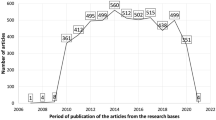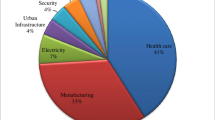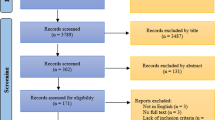Abstract
Healthcare systems are very complex due to extreme heterogeneity in their data and processes. Researchers and practitioner need to make systems interoperable and integrate for the benefit of all the stakeholders including hospitals, clinicians, medical support staff, and patients. The broader goal of interoperability can only be achieved when standards are practiced.Two different healthcare systems can earn HL7 conformance and compliance but at the same time can be incompatible for interoperability because of varying implementation of HL7 interaction model. This is mainly because workflows in healthcare systems are very complex. Interoperability on one hand requires flexible mechanism for the mapping of business processes to a standard, HL7 in our example. On the other hand it requires deeper understanding of the standard interaction model and gaps created by their incompatible implementations. In this paper we propose a novel technique of dynamically creating semantic web services as overlay on top of the existing services. We used Web Service Modeling Framework as an underlying architecture for HL7 process artifacts implementation as semantic web services. These semantic services are mapped to our proposed interaction ontology. Integrated reasoning mechanism provides necessary execution semantics for more effective and seamless end-to-end communication.The prototype we tested on different processes from the laboratory domain at a local diagnostic laboratory with uninterrupted process flow. The scenario of Result Query Placer interaction flow and its associated process artifacts are executed for the proof of concept.The proposed solution complements the existing data interoperability in HL7 and leads to semantic process interoperability. The achievement of semantic interoperability results in timely delivery of healthcare services to patients saving precious lives.











Similar content being viewed by others
Notes
Health Life Horizon Project aim was to carry out research in healthcare by developing Health Level 7-based software framework in order to provide health services for diverse communities of the world. It was supported by National ICT R&D Fund, Pakistan under reference number ICTRDF/TR&D/2008/47.
References
Semantic web health care and life sciences (hcls) interest group. http://www.w3.org/blog/hcls. (Last visited in May 2010)
Hl7 standards. http://www.hl7.org/implement/standards/index.cfm?ref=nav. (Last visited in March 2012)
Khan WA, Hussain M, Afzal M, Latif K, Ahmad HF, Khattak AM (2009) Towards semantic process interoperability. In: 10th International HL7 Interoperability Conference (IHIC), Kyoto, pp 88–95
Standards support interoperability safety and quality patient care. http://www.hitug.org/CA/article_read.asp?title=Standards+Support+Interoperability+Safety+and+Quality+Patient+Care&item=25. Last visited in March 2012
Krogstie J, Veres C, Sindre G (2006) Interoperability Through Integrating Semantic Web Technology, Web Services, and Workflow Modeling. Interoperability of Enterprise Software and Applications, pp 147–158
Fensel D, Bussler C (2002) The web service modeling framework wsmf. Electron Commer Res Appl 1(2):113–137
Miller T (2009) Siemens healthcare—workflow and solution division. http://www.siemens.com/investor/pool/en/investor_relations/financial_publiations/_speeches_and_presentations/cmd_healthcare/cmd_2009_miller_hws.pdf
Song X, Hwong B, Matos G, Rudorfer A, Nelson C, Han M, Girenkov A (2006) Understanding requirements for computer-aided healthcare workflows: experiences and challenges. In: International conference on software engineering (ICSE), Shanghai
Beeler GW, Huff S, Rishel W, Shakir A-M, Walker M, Mead C, Schadow G (1999) Message development framework. Technical report, Version 3.3, Health Level Seven, Inc
Hl7 version 3 standard: Infrastructure management: Transmission infrastructure. Technical report. Normative 2011 (2011)
Kerrigan M, Mocan A, Tanler M, Bliem W (2007) Creating semantic web services with the web service modeling toolkit (wsmt). In: Proceedings of workshop on making semantics work for business (MSWFB) at the 1st European semantic technology conference (ESTC), Vienna
Cabral L, Domingue J, Mottal E, Payne T, Hakimpour F (2004) Approaches to semantic web services: an overview and comparisons. In: Proceedings of the First European Semantic Web Symposium, ESWS, pp 225–239, Heraklion, Crete (2004)
Nixon L, Paslaru E (2004) State of the art of current semantic web services initiatives. Technical report, EU-IST Network of Excellence (NoE) IST-2004-507482 KWEB. http://knowledgeweb.semanticweb.org/semanticportal/deliverables/D2.4.ID1.pdf
Motta E, Domingue J, Cabral L, Gaspari M (2003) Irs-ii: a framework and infrastructure for semantic web services. Semant Web-ISWC 2003:306–318
Hakimpour F, Sell D, Cabral L, Domingue J, Motta E (2004) Semantic web service composition in irs-iii: the structured approach. In: CEC ’05: Proceedings of the seventh IEEE international conference on e-commerce technology (CEC’05), pp 484–487, Washington, DC
Patil AA, Oundhakar SA, Sheth AP, Verma K (2004) Meteor-s web service annotation framework. In Proceedings of the 13th International Conference on World Wide Web, pp 553–562
Meteor-s: Semantic web services and processes applying semantics in annotation, quality of service, discovery, composition, execution. http://lsdis.cs.uga.edu/proj/meteor/. (Last visited in Febuary 2011)
Battle S et al (2005) Semantic web services framework (swsf) overview. Technical report, W3C Member Submission. http://www.w3.org/Submission/SWSF/
de Bruijn J, Fensel D, Kifer M, Kopeck J, Lara R, Lausen H, Polleres A, Roman D, Scicluna J, Toma I (2005) Relationship of wsmo to other relevant technologies. Technical report, W3C Member Submission
Della Valle E, Cerizza D, Bicer V, Kabak Y, Laleci GB, Lausen H (2005) The need for semantic web service in the ehealth. In: W3C workshop on Frameworks for Semantics in Web Services
Dogac A, Laleci GB, Kirbas S, Kabak Y, Sinir SS, Yildiz A, Gurcan Y (2006) Artemis: deploying semantically enriched web services in the healthcare domain. Inf Syst 31(4–5):321–339
Carr CD, Moore SM (2003) Ihe: a model for driving adoption of standards. Comput Med Imaging Graph 27(2):137–146
Wozak F, Ammenwerth E, Hörbst A, Sögner P, Mair R, Schabetsberger T Ihe based interoperability for service oriented architectures
Wozak F, Ammenwerth E, Horbst A, Sogner P, Mair R, Schabetsberger T (2008) Ihe based interoperability-benefits and challenges. Stud Health Technol Inf 136:771
Sahay R, AKhtar W, Fox R (2008) Ppepr: Plug and play electronic patient records. In: Proceedings of the 2008 ACM Symposium on Applied Computing (SAC), Fortaleza, Ceara
Sahay R, Fox R, Zimmermann A, Polleres A, Hauswrith M (2011) A methodological approach for ontologising and aligning health level seven (hl7) applications. Availability, reliability and security for business, enterprise and health information systems, pp 102–117
Afzal M, Hussain M, Ahmad HF, Ali A (2008) Design and implementation of open source hl7 version 3 for e-health services. In Proceedings of 9th International HL7 Interoperability Conference (IHIC), Crete, pp 174–179
Umer S, Afzal M, Hussain M, Latif K, Ahmad HF (2011) Autonomous mapping of hl7 rim and relational database schema. Inf Syst Front :1–14
Services: Service oriented architecture and hl7 v3. http://www.hl7.org/v3ballot/html/welcome/environment/index.html. (Last visited in March 2012)
Acknowledgments
This research was supported by the MKE (The Ministry of Knowledge Economy), Korea, under the ITRC (Information Technology Research Center) support program supervised by the NIPA (National IT Industry Promotion Agency)” (NIPA-2012-(H0301-12-2001)).
Author information
Authors and Affiliations
Corresponding author
Rights and permissions
About this article
Cite this article
Khan, W.A., Hussain, M., Latif, K. et al. Process interoperability in healthcare systems with dynamic semantic web services. Computing 95, 837–862 (2013). https://doi.org/10.1007/s00607-012-0239-3
Received:
Accepted:
Published:
Issue Date:
DOI: https://doi.org/10.1007/s00607-012-0239-3




